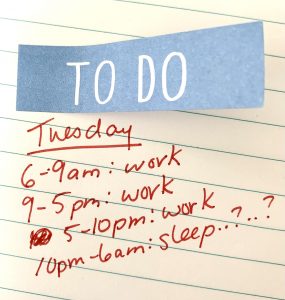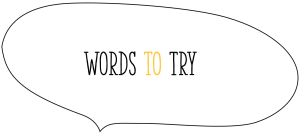16 Dualisms, Work, and Gender Roles
Rebecca Yoshizawa

Dominant gender ideology aligns sex, gender, social roles, and identities, producing a very rigid framework. This framework is dualistic: that is, it presents two mutually-exclusive options, men and women. This framework produces a social structure that we can identify as patriarchy, or the hierarchicalization of men over women, such that men are enabled to better survive, thrive, and provide in society writ large compared to women. At the same time, we must recognize that not all men enjoy the same level of protection in patriarchy. Racialized, disabled, trans, and/or non-heterosexual men, for example, would not experience the same level of privilege in patriarchy as a white, able-bodied, heterosexual and cisgender man.
In western societies, this dualistic framework extends beyond gender; we can find dualism in many elements of dominant western culture. Not only this, but other dualisms are aligned with dominant gender ideology.[1] As in the chart below, we see that mind-body dualism is aligned with dominant gender ideology, such that the mind is aligned with men and the body with women; men are seen as rational and women emotional; men enjoy full personhood status while women are objectified; and so on.
| Dominant Gender Ideology | ||
| Sex | Male | Female |
| Gender | Masculine | Feminine |
| Identity and Social Role | Man/boy | Woman/girl |
| Other Dualisms | Mind | Body |
| Rational | Emotional | |
| Subject | Object | |
| Public | Private | |
These aligned dualisms influence the social roles assigned to men and women. Where industry and politics are “public” and the sphere of men, the home is considered “private,” and the sphere of women. Here, we see that “women’s traditional work,” such as housework and childcare, becomes invisible. It is also undervalued, in that home-related work is typically unpaid. Sometimes unpaid labour is not even seen as “work”: its invisibility is part of the power of patriarchy to shape the meanings of daily life and confer protections to men’s ability to survive and thrive. When home-related work is paid, it tends to be underpaid and disproportionately done by women, people of colour, and migrants, who in turn experience more economic hardship, insecurity, and poverty. Here, we see an intersection of race, class, and gender in determining people’s life chances. When it is the case that women work outside the home, they often face what is called a gender wage gap, or a difference in wages/salaries/benefits between men and women. This gap is seen across the board in most positions and industries. The feminist slogan “equal pay for equal work” is a response to the gender wage gap.

Patriarchy: a social system that enables men to better survive, thrive, and provide in society writ large compared to women
Gender wage gap: a measurable difference in what men are paid compared to women
Racialized: a group or individual who comes to be defined by supposed racial traits
Invisible labour: work that is unaccounted form, unnoticed, and uncompensated
Gender roles: roles or behaviours assigned as appropriate for a gender
- This is informed by Anne Fausto-Sterling's concept of "duelling dualisms" that you can find written about here: http://artsites.ucsc.edu/faculty/gustafson/FILM%20165A.W11/film%20165A%5BW11%5D%20readings%20/faustodueling.pdf ↵
hourly wage or salary for work
no wage or salary for work
a social system that enables men to better survive, thrive, and provide in society writ large compared to women
a measurable difference in what men are paid compared to women
a group or individual who comes to be defined by supposed racial traits
work that is unaccounted form, unnoticed, and uncompensated
roles or behaviours assigned as appropriate for a gender

